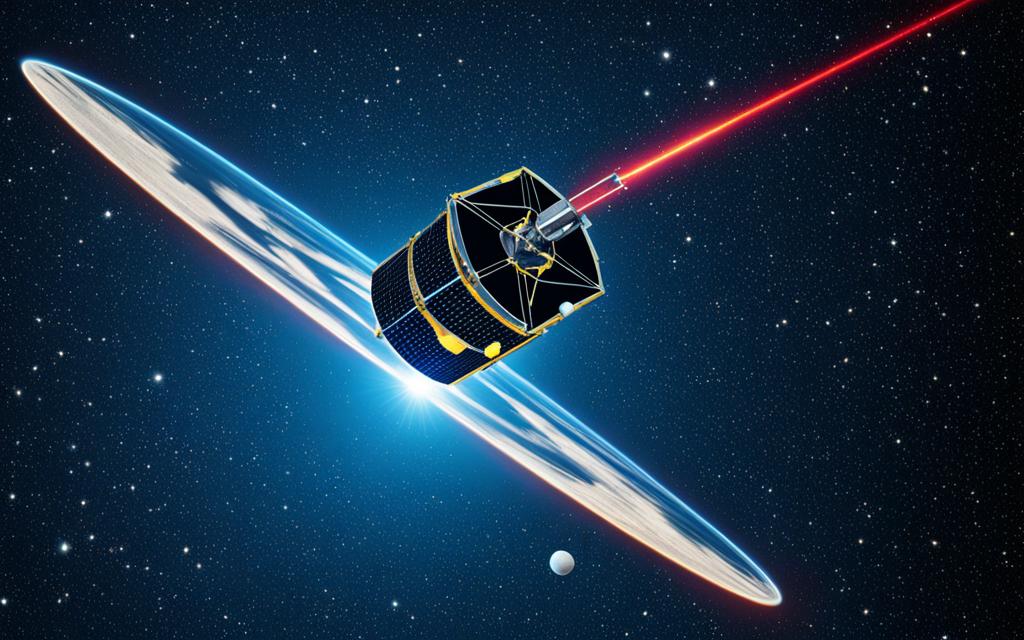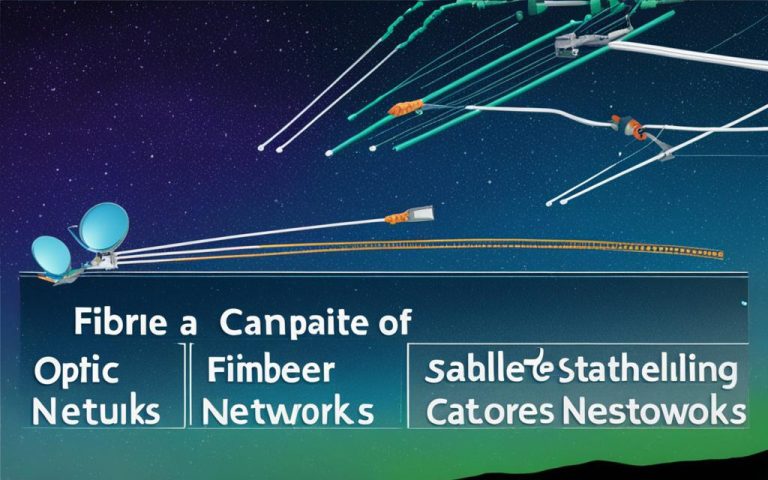Beam hopping technology has revolutionized satellite communication systems by enabling dynamic resource allocation for flexible coverage. With the increasing demand for satellite services, traditional static resource allocation methods are no longer sufficient to efficiently manage uneven traffic requests. Beam hopping technology addresses this challenge by dynamically allocating resources based on demand, allowing for optimal utilization of capacity.
In this article, we will explore the concept of beam hopping technology and its significance in satellite communication. We will delve into the process of resource allocation and how it is optimized through beam hopping. Additionally, we will discuss the benefits and challenges associated with this technology.
By implementing beam hopping, satellite systems can adapt to non-uniform traffic requirements, ensuring efficient utilization of resources and providing adaptive coverage based on demand. This technology plays a crucial role in improving system performance and user satisfaction.
Throughout this article, we will also emphasize the importance of beam hopping in satellite Internet of Things (IoT) scenarios and its potential for achieving high throughput and low collision probability. We will introduce the Improved Spread Spectrum Aloha (ISSA) protocol, which optimizes resource allocation and maximizes system capacity.
Join us as we explore the world of beam hopping technology, its impact on satellite communication, and the future developments in this field.
System Model for Beam Hopping of Forward Link
The system model for beam hopping in the forward link of multi-beam geostationary satellite systems is crucial for understanding the efficient transmission of broadband services from the gateway station to user terminals. This section outlines the key components and principles involved in this system model, shedding light on the underlying mechanisms that enable beam hopping to optimize performance.
Beam Hopping Time Plan
The beam hopping time plan (BHTP) plays a vital role in determining the dwell time and illumination order of each beam in the multi-beam antenna system. Pre-generated by the network control center, the BHTP serves as a roadmap for the onboard beam hopping controller, enabling it to activate the corresponding beams based on the predetermined schedule.
“The BHTP acts as a guiding framework, ensuring the sequential activation of beams in a controlled manner, aligning with the dynamic resource allocation requirements and traffic demands.”
This strategic activation allows for aggressive frequency reuse, mitigating co-channel interference and maximizing spectral efficiency. By carefully orchestrating the beam activation sequence, beam hopping optimizes the utilization of resources and ensures efficient transmission between the gateway station and user terminals.
System Architecture and Control
The system architecture supporting beam hopping incorporates essential components to control beam activation and ensure seamless communication. A switching matrix or beamformer is utilized to regulate the activation of beams. This control mechanism enables the system to dynamically adjust beam coverage, facilitating efficient resource allocation based on the specific traffic demands of different user terminals.
In summary, the system model for beam hopping in the forward link of multi-beam geostationary satellite systems encompasses the BHTP and the underlying architecture for beam activation control. Together, they enable flexible coverage, aggressive frequency reuse, avoidance of co-channel interference, and overall high spectral efficiency.
| Benefits of Beam Hopping in the Forward Link | Challenges of Beam Hopping in the Forward Link |
|---|---|
|
|
This diagram visually represents the system model for beam hopping in the forward link, showcasing the interplay between the BHTP, the beamformer or switching matrix, and the multi-beam antenna system. This visualization aids in understanding the flow and functionality of the system, emphasizing the dynamic resource allocation aspect of beam hopping.
Improved Spread Spectrum Aloha (ISSA) Protocol for Satellite IoT
The paper proposes the Improved Spread Spectrum Aloha (ISSA) protocol for the return channel in satellite Internet of Things (IoT) based on the beam-hopping technique. The ISSA protocol aims to achieve high throughput and low collision probability, addressing the challenges of spread spectrum aloha and random access in satellite IoT scenarios.
The key design driver and detailed solution of the ISSA protocol are presented in this paper. The protocol introduces a low-complexity heuristic beam scheduling algorithm and a more effective Maximum-Weighted Clique (MWC) algorithm. By taking into account factors such as user/traffic distribution, inter-beam interference, fairness, delay requirement, and channel condition, the ISSA protocol optimizes resource allocation to maximize system capacity.
| Feature | ISSA Protocol | Standard SSA Protocol |
|---|---|---|
| Data Throughput | High | Medium |
| Collision Probability | Low | High |
| Beam Scheduling Algorithm | Heuristic and MWC | N/A |
| Resource Allocation | Optimized | Fixed |
By implementing the ISSA protocol, satellite IoT systems can benefit from enhanced data throughput and reduced collision probability, improving overall system performance and efficiency.
ISSA Protocol Benefits:
- High throughput
- Low collision probability
- Optimized resource allocation
- Improved system performance
The ISSA protocol revolutionizes random access techniques in satellite IoT by leveraging the beam-hopping technology to achieve efficient and reliable communication for a wide range of IoT applications.
ISSA Protocol Challenges:
- Channel quality assessment
- Optimal resource allocation algorithms
- Interference management strategies
The ongoing research and development of beam hopping technology continue to address these challenges and further enhance the performance and efficiency of satellite communication systems.

Stay tuned for the next section, where we will evaluate the performance of the ISSA protocol and compare it with traditional spread spectrum aloha protocols.
Performance Evaluation of ISSA Protocol
The performance of the Improved Spread Spectrum Aloha (ISSA) protocol is crucial for assessing its effectiveness in satellite Internet of Things (IoT) scenarios. To evaluate its performance, a comparison is made with the Spread Spectrum Aloha (SSA) protocol, which serves as a baseline. The evaluation focuses on key metrics such as system throughput, collision probability, and user satisfaction.
The simulation results demonstrate that the ISSA protocol significantly outperforms the SSA protocol in terms of system throughput. By utilizing the beam-hopping technique and incorporating efficient resource allocation algorithms, the ISSA protocol achieves a notable gain in overall system performance. This improvement is attributed to the optimized beam scheduling algorithm and the utilization of the Maximum-Weighted Clique (MWC) algorithm.
To further analyze the performance of the ISSA protocol, simulations are conducted by combining it with different beam scheduling algorithms for the return link in beam-hopping satellite IoTs. The objective is to evaluate the impact of different scheduling approaches on system throughput, particularly in scenarios with non-uniform user distribution. The results highlight the significance of the scheduling algorithm in enhancing system performance.
In addition to system throughput, user satisfaction is a crucial aspect of performance evaluation. The ISSA protocol is evaluated based on the heuristic and MWC algorithms for beam scheduling. The simulation results confirm that both algorithms effectively improve user satisfaction, ensuring a reliable and efficient satellite IoT communication system.
“The simulation results show that the ISSA protocol achieves a significant gain in system throughput.”
Evaluation Summary
The following table summarizes the performance evaluation of the ISSA protocol and its comparison with the SSA protocol:
| Metric | ISSA Protocol | SSA Protocol |
|---|---|---|
| System Throughput | High | Low |
| Collision Probability | Low | High |
| User Satisfaction | High | Variable |
The evaluation clearly demonstrates the superiority of the ISSA protocol over the SSA protocol. With its effective resource allocation algorithms and the ability to adapt to non-uniform user distribution scenarios, the ISSA protocol enables a high-performing and reliable satellite IoT communication system.
Benefits and Challenges of Beam Hopping Technology
Beam hopping technology offers several benefits in satellite communication systems. It enables flexible and dynamic resource allocation, efficient utilization of resources, and adaptive coverage based on traffic demand.
With beam hopping, satellite systems can allocate resources dynamically based on the changing traffic patterns, ensuring optimal resource utilization. This flexibility allows for efficient sharing of limited resources among multiple beams, enabling satellite systems to handle varying traffic demands effectively.
One of the key benefits of beam hopping is its ability to improve system throughput. By dynamically allocating resources to the beams with high traffic demand, beam hopping technology ensures efficient transmission and minimizes congestion, leading to increased data rates and improved overall network performance.
Beam hopping also promotes fairness in resource allocation. By dynamically adjusting the resource allocation to various beams based on their traffic demands, it ensures that all users receive a fair share of network resources, leading to enhanced user experience and satisfaction.
Moreover, beam hopping technology enables adaptive coverage, allowing satellite systems to focus resources on areas with high demand while reducing resources in areas with low or no traffic. This adaptive coverage ensures efficient resource utilization and enables satellite systems to cater to changing communication needs.
However, there are also challenges associated with beam hopping that need to be addressed. Accurate channel quality assessment is crucial for efficient beam hopping. Precise knowledge of channel conditions is necessary to make informed decisions regarding beam activation and resource allocation. The accuracy of channel quality estimation techniques directly affects the performance of beam hopping systems.
Another challenge is the development of optimal resource allocation algorithms. As beam hopping technology becomes more advanced, the complexity of resource allocation increases. Developing efficient algorithms that consider various factors like beam traffic demands, channel conditions, interference levels, and fairness requirements is essential to maximize the benefits of beam hopping technology.
Interference management is also a significant challenge in beam hopping systems. With multiple beams operating concurrently, interference between neighboring beams may occur. Designing effective interference mitigation strategies that minimize co-channel interference and ensure reliable communication is essential for the successful implementation of beam hopping technology.
The ongoing research and development efforts in beam hopping technology aim to address these challenges and further enhance the performance and efficiency of satellite communication systems.
Benefits of Beam Hopping Technology:
- Flexible and dynamic resource allocation
- Efficient utilization of resources
- Adaptive coverage based on traffic demand
- Improved system throughput
- Enhanced fairness in resource allocation
Challenges of Beam Hopping Technology:
- Accurate channel quality assessment
- Optimal resource allocation algorithms
- Interference management strategies
Conclusion
In conclusion, beam hopping technology offers a promising solution for dynamic resource allocation in satellite communication systems. By enabling flexible coverage and efficient utilization of resources, beam hopping allows for adaptation to non-uniform traffic demand, resulting in improved system performance. To further enhance the capabilities of beam hopping, research efforts have focused on optimizing resource allocation algorithms, exploring the use of deep reinforcement learning, and developing industry standards.
The ISSA protocol, proposed in this paper, demonstrates the potential of beam hopping technology in satellite Internet of Things (IoT) scenarios. This protocol achieves high throughput and low collision probability, addressing the needs of modern satellite IoT applications. However, it is important to acknowledge the challenges that arise with beam hopping, such as accurate channel quality assessment and optimal resource allocation algorithms.
Despite these challenges, ongoing research aims to overcome them and continue improving the performance of satellite communication systems. The development of beam hopping technology represents a significant advancement in the field, as it enables dynamic resource allocation and enhances the efficiency of satellite communication systems. As the technology continues to evolve, we can expect to see further improvements in satellite communications, benefiting various industries and enhancing connectivity on a global scale.
FAQ
What is beam hopping technology?
Beam hopping technology is a solution for satellite systems to efficiently manage uneven traffic requests and dynamically allocate resources based on demand. It enables flexible coverage, high resource utilization, and adaptive resource allocation.
How does beam hopping work in the forward link of satellite systems?
In the forward link, beam hopping involves transmitting broadband services from the gateway station to user terminals through multi-beam antennas. The beam hopping time plan determines the dwell time and illumination order of each beam, which are controlled by an onboard beam hopping controller.
What is the Improved Spread Spectrum Aloha (ISSA) protocol for satellite IoT?
The ISSA protocol is a random access protocol based on beam hopping technology. It aims to achieve high throughput and low collision probability in satellite Internet of Things scenarios. It optimizes resource allocation using heuristic beam scheduling and the Maximum-Weighted Clique algorithm.
How does the ISSA protocol perform compared to the Spread Spectrum Aloha (SSA) protocol?
Simulation results show that the ISSA protocol achieves a significant gain in system throughput compared to the SSA protocol. Additionally, the effectiveness of different scheduling algorithms in improving throughput performance and user satisfaction is evaluated.
What are the benefits of beam hopping technology?
Beam hopping technology offers several benefits, including flexible and dynamic resource allocation, efficient utilization of resources, and adaptive coverage based on traffic demand. It can improve system throughput, fairness, and user satisfaction in satellite communication systems.
What are the challenges associated with beam hopping technology?
Challenges associated with beam hopping technology include the need for accurate channel quality assessment, optimal resource allocation algorithms, and interference management strategies. Ongoing research and development aim to address these challenges and further enhance the performance of satellite communication systems.



















